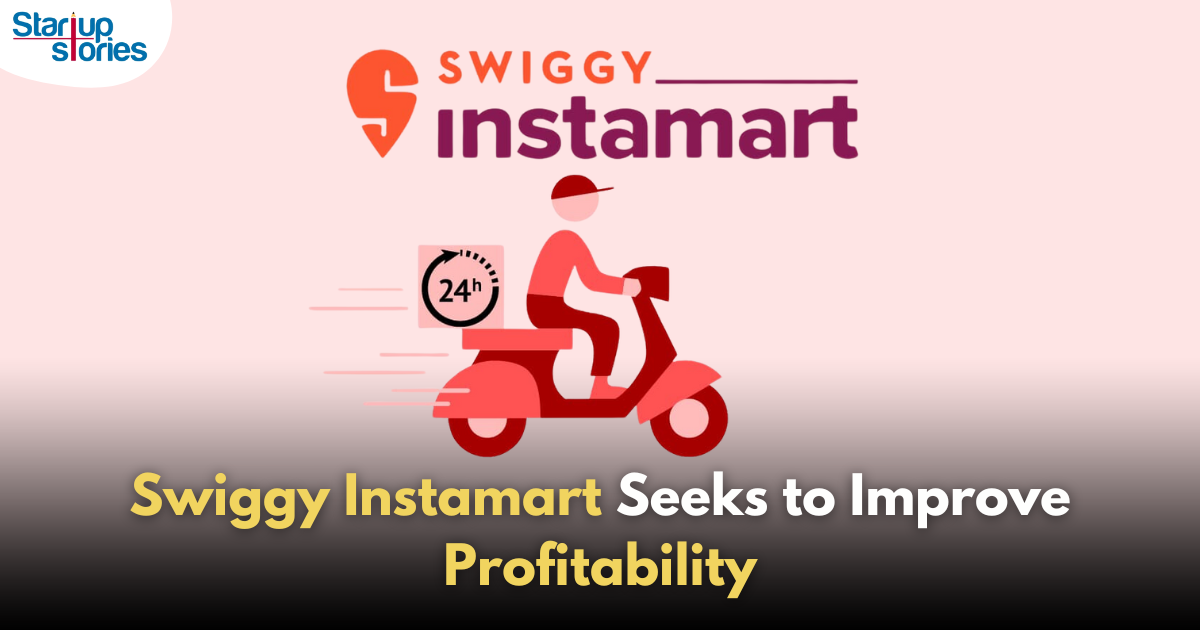Swiggy’s quick-commerce service, Instamart, is actively working to increase the average amount customers spend per order. While the service has seen a rapid growth, its average order value (AOV) of ₹499 is lower than some competitors, prompting the company to implement several strategies to enhance profitability.
Strategies to Boost Sales per Order
More Products
Instamart is expanding its product range by adding a wider variety of items, including non-food products. This diversification aims to encourage customers to purchase more items per order, thereby increasing the overall AOV.
Bigger Warehouses
To support this expansion, Swiggy is investing in larger warehouses that can stock a more extensive inventory. By increasing storage capacity, Instamart can offer a broader selection of products, making it more convenient for customers to find everything they need in one place.
Targeted Marketing
Instamart is employing targeted marketing strategies to attract customers who are likely to spend more. By analyzing customer data and purchasing behavior, Swiggy can tailor promotions and advertisements to encourage higher spending per transaction.
Why It Matters
Increasing the average order value is crucial for Instamart’s profitability. By encouraging customers to spend more per order, the company can reduce its costs and improve its bottom line. A higher AOV can lead to better margins and help offset operational expenses associated with quick delivery services.
Competitive Landscape
However, achieving this goal won’t be easy. The quick-commerce market is highly competitive, with other companies like Blinkit, Zepto, and BigBasket also vying for customers. Instamart will need to continue innovating and finding new ways to attract and retain customers amidst this fierce competition.
Financial Performance and Market Position
In recent financial reports, Swiggy noted that Instamart generated ₹3,221.4 crore in FY23, reflecting a 39.7% increase from the previous fiscal year. The average order value has risen by 20% to around ₹460, indicating that efforts to enhance customer retention and basket sizes are beginning to yield results.
Delivery Fee Adjustments
As part of its strategy to boost profitability, Swiggy may also consider increasing delivery fees for Instamart orders. According to Chief Financial Officer Rahul Bothra, the company plans to gradually raise these charges while ensuring that they remain competitive compared to other players in the market.
Conclusion
Swiggy Instamart is focusing on increasing sales per order through product diversification and improved warehousing. This strategic approach aims to enhance profitability and strengthen its position in the competitive quick-commerce market. By understanding and catering to evolving consumer preferences, Instamart is well-positioned to drive sustainable growth in the future.


droversointeru
April 12, 2025 at 8:59 pm
My brother suggested I would possibly like this website. He was once entirely right. This put up actually made my day. You cann’t imagine simply how a lot time I had spent for this information! Thank you!
Kuwin
November 5, 2025 at 2:56 pm
kuwin sở hữu kho game đa dạng từ slot đến trò chơi bài đổi thưởng, mang đến cho bạn những giây phút giải trí tuyệt vời.
谷歌蜘蛛池
November 8, 2025 at 3:54 pm
利用强大的谷歌蜘蛛池技术,大幅提升网站收录效率与页面抓取频率。谷歌蜘蛛池
J88
November 10, 2025 at 6:10 am
Đến với J88, bạn sẽ được trải nghiệm dịch vụ cá cược chuyên nghiệp cùng hàng ngàn sự kiện khuyến mãi độc quyền.
站群程序
November 11, 2025 at 8:43 pm
采用高效谷歌站群策略,快速提升网站在搜索引擎中的可见性与权重。谷歌站群
MM88
November 12, 2025 at 12:45 am
Với giao diện mượt mà và ưu đãi hấp dẫn, MM88 là lựa chọn lý tưởng cho các tín đồ giải trí trực tuyến.
GO88
November 17, 2025 at 3:07 am
Tham gia cộng đồng game thủ tại Go88 để trải nghiệm các trò chơi bài, poker phổ biến nhất hiện nay.